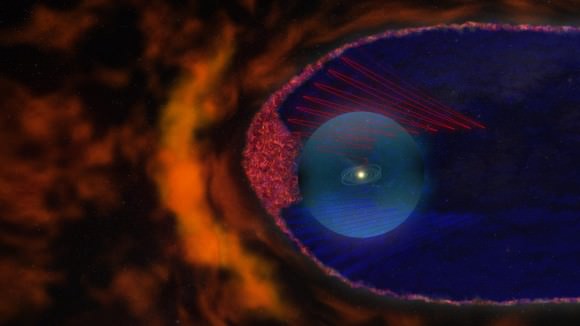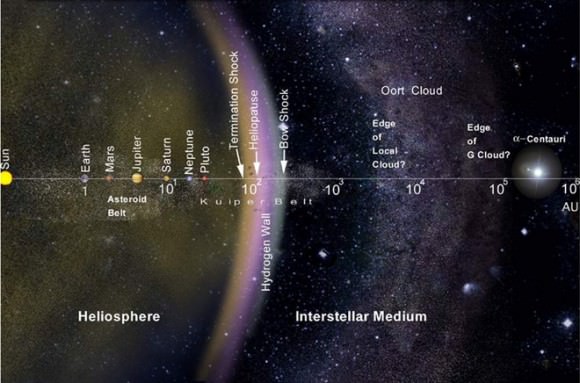
For most of us, stuck here on Earth, we see very little of the rest of the Solar System. Just the bright Sun during the day, the Moon and the planets at night. But in fact, we’re embedded in a huge Solar System that extends across a vast amount of space.
(If you don't read the article and go direct to the bottom to watch the video then it’s useless or if you read the article and don't watch video then it’s also useless... Read and Watch the Video)
Which begs the question, just how big is the Solar System? Before we can give a sense of scale, let’s consider the units of measurement.
Distances in space are so vast, regular meters and kilometers do not cut it. Astronomers use a much larger measurement, called the astronomical unit. This is the average distance from the Earth to the Sun, or approximately 150 million kilometers. Mercury is only 0.39 astronomical units from the Sun, while Jupiter orbits at a distance of 5.5 astronomical units. And Pluto is way out there at 39.2 astronomical units.
That’s the equivalent of 5.9 billion kilometers.
If you could drive your car at highway speeds, from the Sun all the way out to Pluto, it would take you more than 6,000 years to complete the trip. But here is the really amazing part. Our Solar System extends much, much farther than where the planets are. Damn!
The furthest dwarf planet, Eris, orbits within just a fraction of the larger Solar System.

Artist’s interpretation depicting the new view of the heliosphere. The heliosheath is filled with “magnetic bubbles” (shown in the red pattern) that fill out the region ahead of the heliopause. In this new view, the heliopause is not a continuous shield that separates the solar domain from the interstellar medium, but a porous membrane with fingers and indentations. Credit: NASA/Goddard Space Flight Center/CI Lab
The Kuiper Belt, where we find a Pluto, Eris, Makemake and Haumea, extends from 30 astronomical units all the way out to 50 AU, or 7.5 billion kilometers.
And we are just getting started.
Even further out, at about 80-200 AU is the termination shock. This is the point where the Sun’s solar wind, traveling outward at 400 kilometers per second collides with the interstellar medium – the background material of the galaxy.

The layout of the solar system, including the great Oort Cloud, on a logarithmic scale. Credit: NASA
This material piles up into a comet-like tail that can extend 230 AU from the Sun. But the true size of the Solar System is defined by the reach of its gravity; how far away an object can still be said to orbit the Sun.
In the furthest reaches of the Solar System is the Oort Cloud; a theorized cloud of icy objects that could orbit the Sun to a distance of 100,000 astronomical units, or 1.87 light-years away. Although we can’t see the Oort Cloud directly, the long- period comets that drop into the inner Solar System from time to time are thought to originate from this region.
The Sun’s gravity dominates local space out to a distance of about 2 light- years, or almost half the distance from the Sun to the nearest star: Proxima Centauri. Believe it or not, any object within this region would probably be orbiting the Sun, and be thought to be a part of the Solar System.
Back to our car analogy for a second. At those distances, it would take you 19 million years to complete the journey to the edge of the Solar System (WoW). Even NASA’s New Horizons spacecraft, the fastest object ever launched from Earth would need 37,000 years to make the trip.
So as you can see, our Solar System is a really really big place.
Via UniverseToday.
